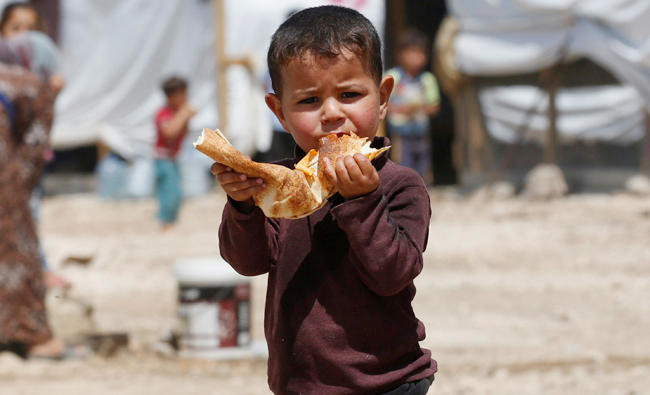
In the South Asian social context, we choose the experience of nothing and we have no pain for losing huge quantum of foods for nothing. Many pains have been ours but many of us are oblivious to the tweaks and traumas caused by them. We simply wait for their transmutation into catastrophic calamities.
Pakistan, India and Bangladesh despite hosting millions of hungry men, women and children still waste substantial amount of food they produce without transferring it to the hungry, malnourished and dying.
Economic and other costs of malnutrition
Despite local connotations, food waste reduction has been assigned tangible targets under United Nations SDG 12 to be achieved by 2030. United Nations make it clear “by 2030, to halve per capita global food waste at the retail and consumer levels and reduce food losses along production and supply chains, including post-harvest losses.” These goals can only be triumphed if companies and countries act together.
UN’s Food and Agriculture Organization (FAO) (2017) reveals that Pakistan’s 40% food goes not to stay in the tummy but in the waste bin. It mixes up directly in the soil where the luxury of bin is not available. More surprise comes when on average each person wastes 250 grams of food during marriage functions.
Developed countries are not altogether different, FAO further stimulates that they also waste 40% of food items and their collective 1.3 billion tons of food goes to waste annually. Nearly 925 million people suffer from hunger around the world. The amount of food lost every year is equivalent to 60% of the world’s annual cereal crops. A very recent study conducted by the Bangladesh’s Financial Express shows that food loss reflects irresponsible consumer behaviour, inappropriate infrastructure and storage facility, poor engineering and agriculture practices. UN’s FAO recognises food wastage at the levels of – agricultural production, post-harvest handling and storage, processing, distribution and consumption.
The Guardian (2017) portrays a more dismal picture of India, where the overall hunger status is “serious”. It remains home to a quarter of the world’s undernourished people but still wastes more than $4.5 billion worth of fruits and vegetables only in a year. Even in US, 40% of the food goes uneaten.
Among other Asian economies, China and India cause a loss of 1.3 billion tonnes of food annually. Russia tops the list in overall food waste-agricultural production, poultry and milk whereas India ranks at seven. India ranks 97 among 118 countries in Global Hunger Index (GHI) with 200 Indians sleeping hungry on every night yet 21 million tonnes of wheat are wasted instead of reaching to the hungry.
A study conducted by India Times in August 2017 further raises eyebrows; India wastes 67 million tonnes of food every year, enough to feed the entire population of Egypt for one year. Chicken and eggs producing hens must be shell-shocked when five million eggs crack or corrode only for lack of cold storages.
Columbia University’s Dr Denning refers to this situation as “Indian Enigma” recent high growth rate has made little impact on high hunger numbers. Indian Enigma is entirely different from VS Naipaul’s 1987 narrations in The Enigma of Arrival. On Indian economy Denning notes that underneath the head scratching lies is a web of complex issues ranging from stalled rural development to cultural factors. Both Denning and Naipaul deride vast open defecation of India. Denning’s study is more insightful, he say malnutrition includes both under-nutrition and over-nutrition occurring simultaneously among developing countries.
Foreign Policy (2015) further alerts, “What is so alarming is how rapidly this double burden of malnutrition, with continuing under-nutrition at one end, accompanying skyrocketing rates of over-nutrition and obesity at the other, is occurring in poor countries.”
In India only 10% food has cold storage facility. With better cold storage facilities, improvement of roads and transport means and by creating a robust awareness among masses, food losses can be controlled in this whole region. This region is to witness hottest temperature in the years to come according to UNEP.
Food fortification strategy: Malnutrition stunts progress
France has set an exemplary standard; it has passed a unanimous law that binds supermarkets to either dish out unsold food to charity or to dispatch it to the farmers for using it as feed and fertilisers for the budding crops.
In Canada a similar practice goes on where institutions collect unused food from retailers, manufacturers, restaurants and caterers for sending same to the charity houses. Among South Asian economies, Bangladesh is performing better on food waste reduction with mass public awareness. On GHI in 2012 it went two steps up in the ranking from 70 to 68; though the status could not be sustained later.
The Economic Times suggests that India’s population may reach 1.45 billion by 2028 similar to China’s 1.7 billion by 2050. Food loss and wastes assume a critical action item for India. Compared with its neighbours on GHI it is at 97, significantly worse than Nepal (72), Sri Lanka (84), Bangladesh (90) and China’s 29. The data for 2016 were compiled in October, covering 118 developing countries. India has made a downward slide, from its 76th position in 1992 to 97 in 2016. India is slightly up than Afghanistan and Pakistan; however, all are bracketed in the same serious category.
UN cautions (2017) “given the limited availability of natural resources, it is more effective to reduce food losses than increase food production in order to feed a growing world population.”
The more food production means more carbon emissions, the more hazards to the survival of humanity. India’s The Pioneer (2017) explains distressing increase in food wastage that is producing nearly 3.3 billion tonnes of greenhouse gas emissions. Particularly the wastage of rice has serious ramifications for the environment as decaying rice emits methane, an intoxicating global warming gas. Similar warnings come from World Economic Forum (2017) that assigns food shortages one of the greatest risks to global stability over next decade.
Current collective world food production can twice feed world’s total population but ironically food wastage is behind the billions of people who are malnourished. Faulkner chose the experience of pain, yet we did otherwise, so otherwise the end products are.
Lee Kuan Yew in his South Asian Leaders and Legends mourns over the apathy we witness even today.
The writer is an alumnus of Potsdam Centre for Public Management Germany and of Geneva Centre for Security Policy Switzerland
Published in The Express Tribune, September 18th, 2017.
Like Business on Facebook, follow @TribuneBiz on Twitter to stay informed and join in the conversation.

1725877703-0/Tribune-Pic-(5)1725877703-0-165x106.webp)















COMMENTS (1)
Comments are moderated and generally will be posted if they are on-topic and not abusive.
For more information, please see our Comments FAQ